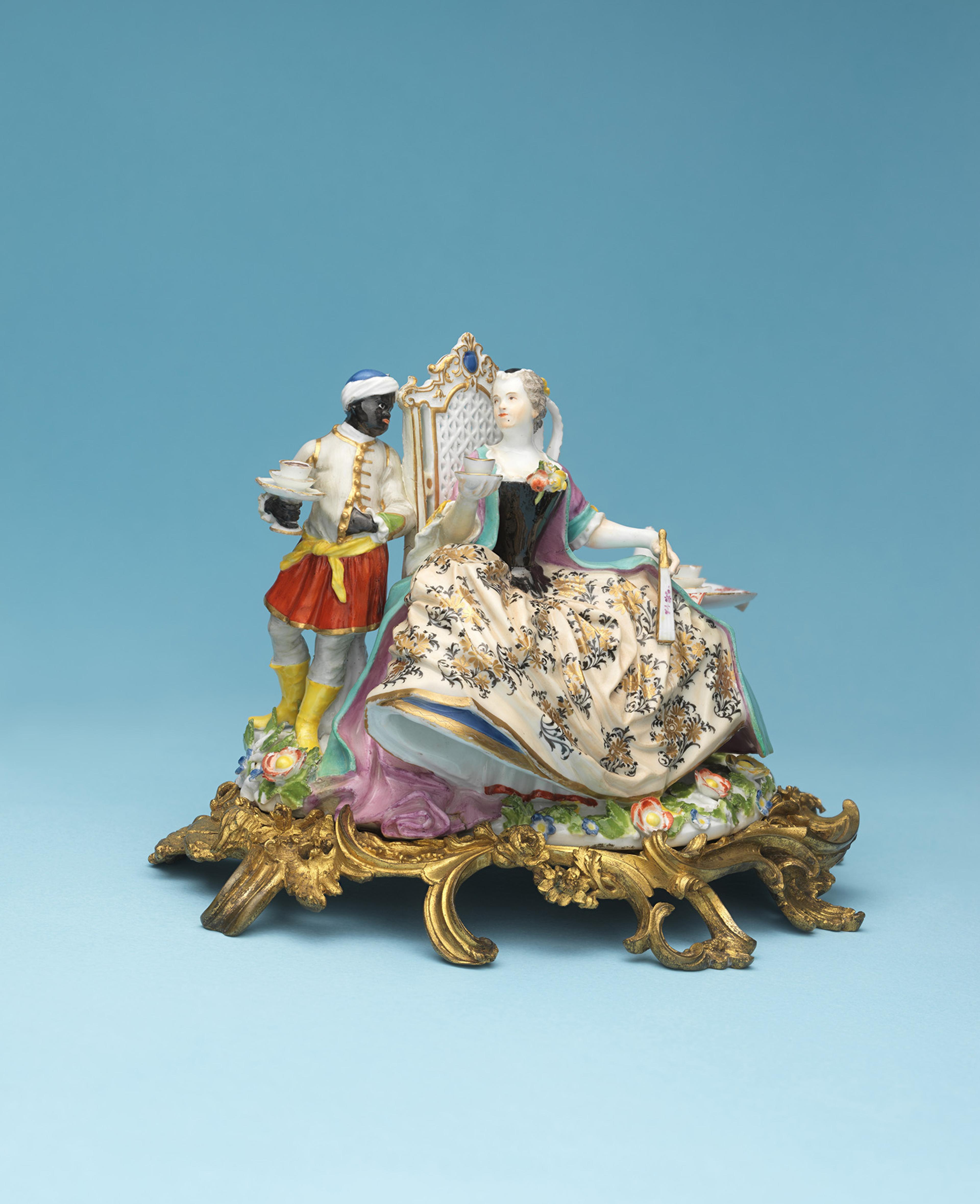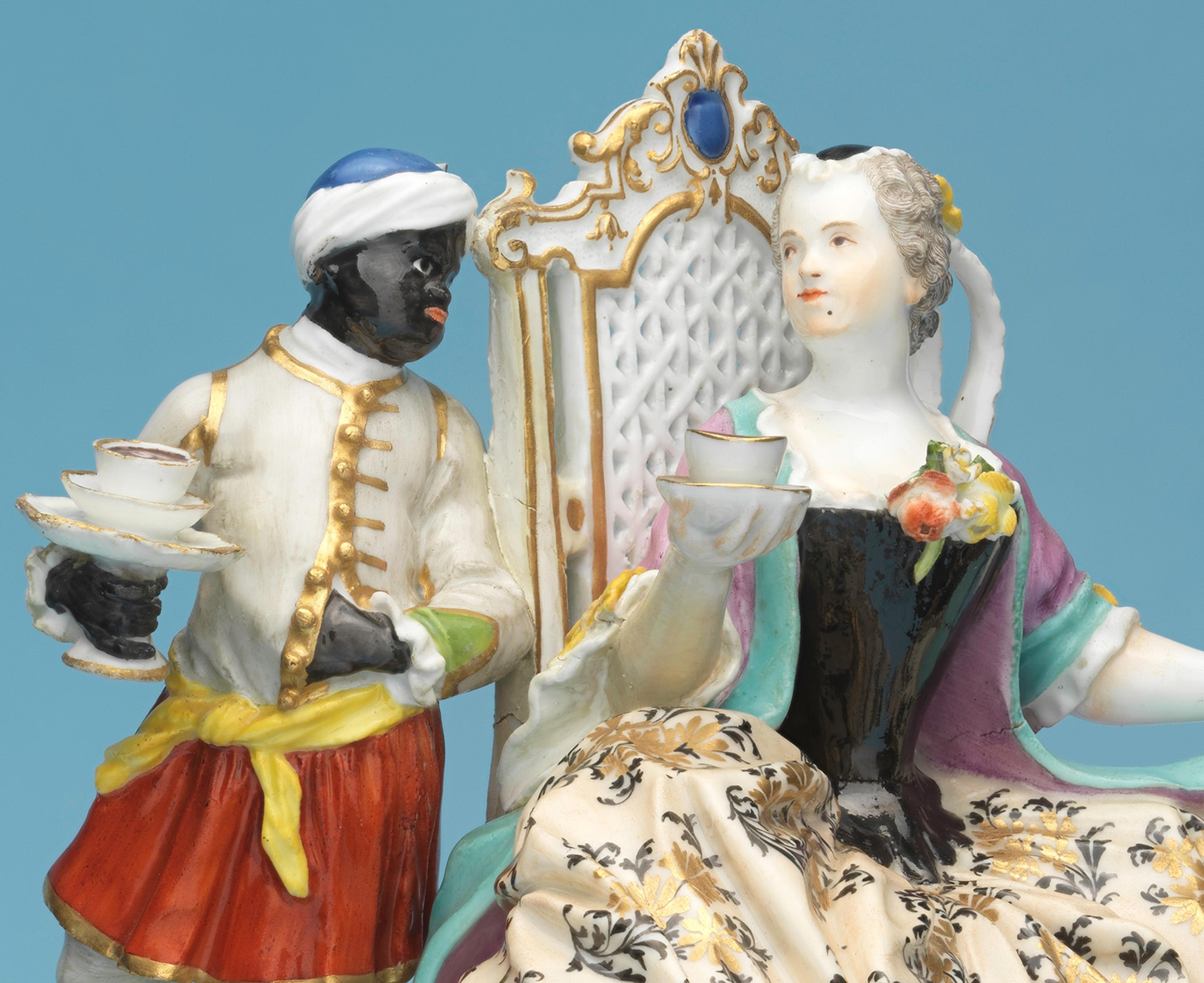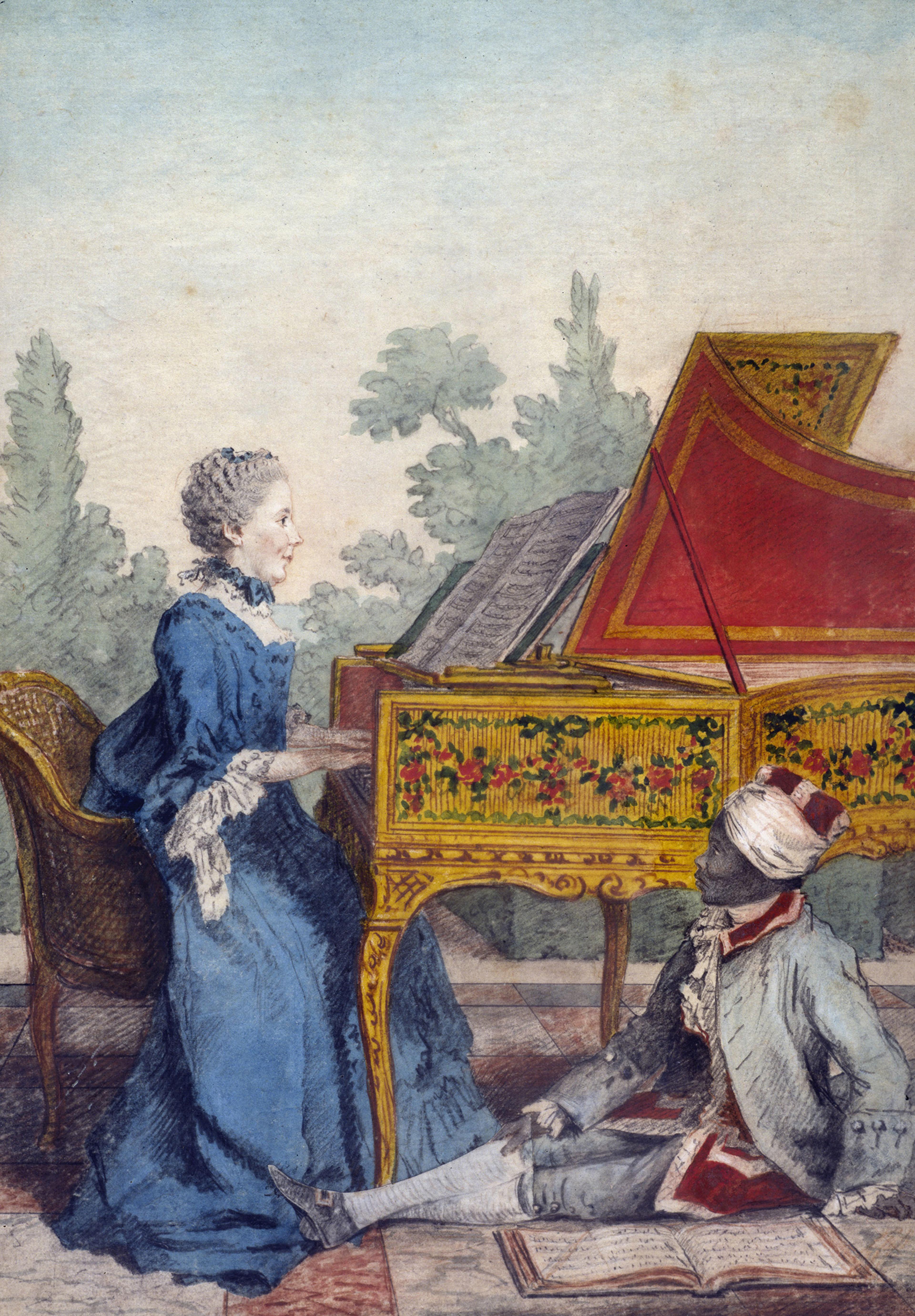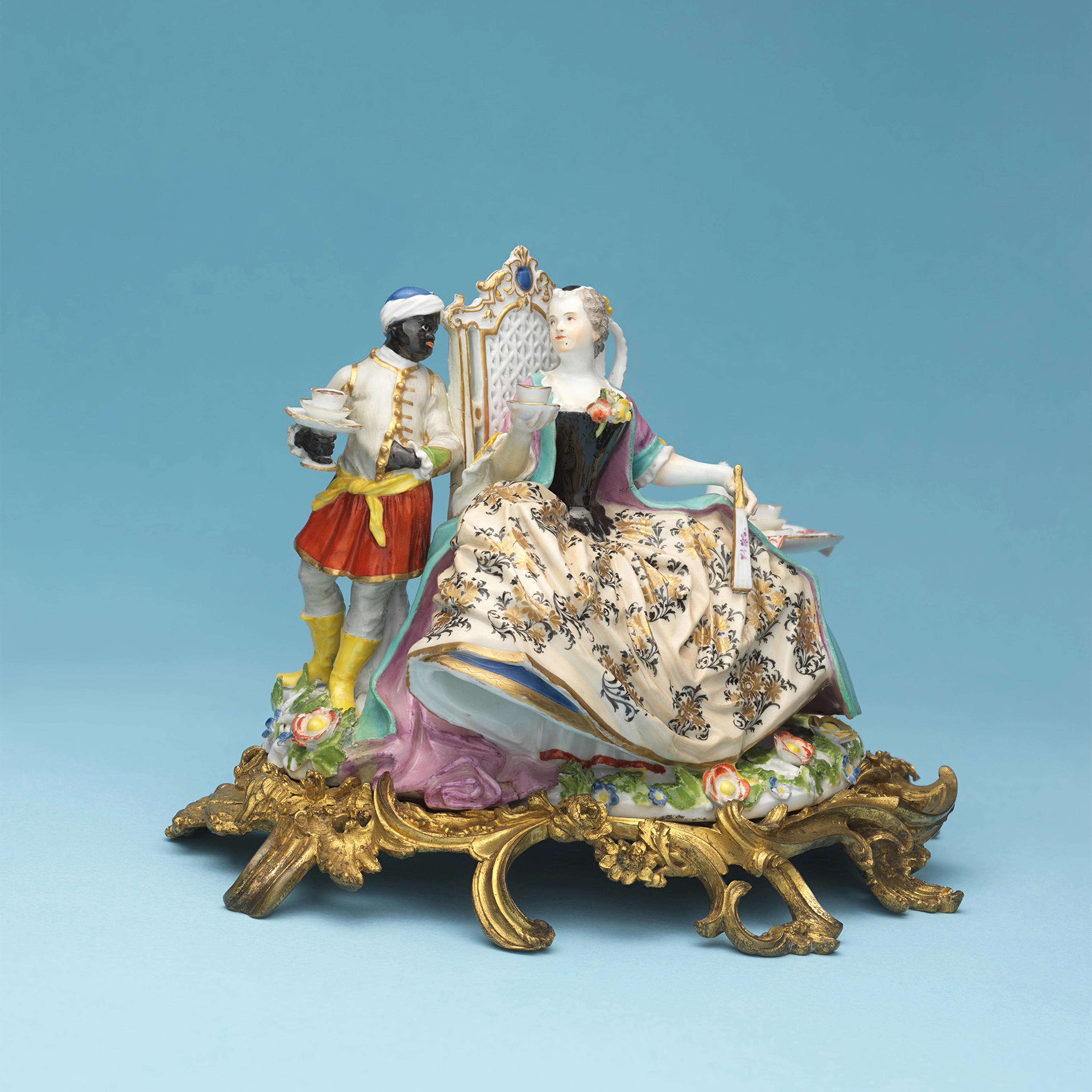Black servitude, fashion, and luxury consumption converge in Lady with Attendant, an eighteenth-century Meissen porcelain figure group in which a liveried young Black male cuts a striking figure. Although formed from a medium in which whiteness was highly valued, the Black attendant was a stock character in porcelain design. This ubiquitous persona demonstrates how style, ornament, and exotic flair can obfuscate the political dimensions of Black servility, normalize the horrors of colonial enslavement, and control the enigma of the Black body.

Meissen Manufactory. Modeled by Johann Joachim Kändler, after compositions by Laurent Cars and François Boucher. Lady with Attendant, ca. 1740. Hard-paste porcelain, gilt-bronze mount, Height: 7 1/4 in. (18.4 cm). The Metropolitan Museum of Art, New York, Gift of Irwin Untermyer, 1964 (64.101.59a, b)
Lady with Attendant was manufactured by Meissen, the first major European producer of hard-paste porcelain. Established by the Saxon court, Meissen became the eighteenth century’s leading trendsetter in porcelain design. Lady with Attendant is typical of the genre labeled “crinoline group,” a type of decorative porcelain confection that features women in fashionable hoop skirts served by attendants, admired by suitors, or both. The Black male attendant, servant, or slave—often referred to as a “Moor” or a “blackamoor”—is an enduring character in Meissen’s crinoline group variations. These popular amusements celebrate the leisure pursuits and romantic exploits of the courtly classes and were destined for display in porcelain cabinets—rooms designed to exhibit porcelain—or used as tabletop or mantel decorations.

Meissen Manufactory. Modeled by Johann Joachim Kändler, after compositions by Laurent Cars and François Boucher. Lady with Attendant (detail), ca. 1740. Hard-paste porcelain, gilt-bronze mount, Height: 7 1/4 in. (18.4 cm). The Metropolitan Museum of Art, New York, Gift of Irwin Untermyer, 1964 (64.101.59a, b)
In Lady with Attendant, a liveried Black attendant serves a chocolate beverage to a white woman in a voluminous dress. The figures gaze at each other in an intimate exchange—his adoration of her is a primary function of his presence in this scene. The young man wears an elegant white, red, and yellow tunic trimmed in gold. His sleeves are accented with green details; his sash and heeled boots are yellow. While the variety of colors enliven his costume, the pure white of his ruffled sleeves and turban establishes a contrast that amplifies his skin’s pure blackness—perhaps his most distinguishing feature. Indeed, his undifferentiated blackness—echoed in the bodice of her dress and the scrolling designs on her skirt—is more decorative than natural and is deployed to enliven her white skin and blushing cheeks. Of course, whiteness—a celebrated quality of porcelain—was a mark of her beauty. His blackness was her foil.

Louis de Carmontelle. Mlle Desgots, de Saint Domingue, avec son nègre Laurent, 1766. Watercolor and pencil on paper, 74 1/2 x 52 in. (29.3 x 20.5 cm). Carnavalet Museum, History of Paris (D.4498)
Although fictional characters in Meissen objects, actual Black servants were de rigueur in eighteenth-century European society. To own a Black attendant was a form of conspicuous excess that signified wealth, a taste for the exotic, and possible colonial connections. Black servants, frequently adorned with a pastiche of feathered turbans, pearl earrings, and sumptuous livery, were conventional accessories to white aristocratic sitters in paintings from the seventeenth century onward. This trope that yokes fashion and luxury to Black subservience most certainly influenced Meissen designers, who often looked to trends in painting as inspiration for their fanciful subjects.
This object lays bare the way a seemingly benign bauble—an object of genteel desire—can be an insidious political agent that both recognizes and obscures Black subjugation.
Meissen’s blackamoor attendant’s fraught mélange of Blackness and European style is aimed at embellishing others, not at representing himself. Indeed, his very presence in the woman’s world—servant to her served, admirer to her admired, Black to her white—is designed to showcase her fashionability, beauty, and whiteness. But what of his fashionability, his beauty, his Blackness? What of the discordant relationship between the realities of Black servitude and the elite leisure pursuits celebrated in this figurine? What of the backbreaking Black labor that brought the chocolate and sugar to this lady’s table? The rumblings of these forces frame Lady with Attendant, yet they are veiled by the smoke and mirrors of style and the decorative conceit. In fact, this object lays bare the way a seemingly benign bauble—an object of genteel desire—can be an insidious political agent that both recognizes and obscures Black subjugation. Liveried Black servants in European luxury arts are more than decorative fictions; they are avatars of Africans ensnared in transatlantic slavery. Even though they are shrouded in European clothing and immobilized by luxury materiality, they recall real Black bodies and real Black labor and are thus the unwitting symbols of the wealth built on their degradation.
This essay is adapted from the catalogue Superfine: Tailoring Black Style, which accompanies an exhibition on view through October 26, 2025.
